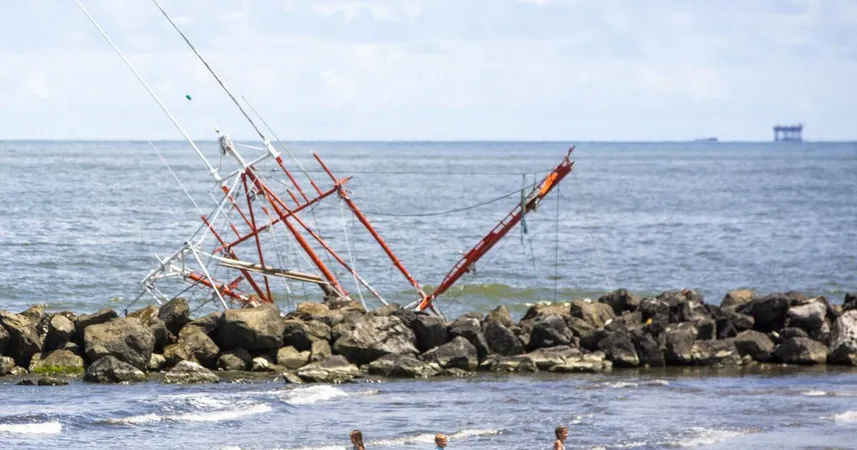
Deadly Vibrio Outbreak Claims Fifth Life in Louisiana: What You Need to Know
2025-09-17
Author: Wei
Fifth Fatality Raises Alarms
Tragedy strikes Louisiana as health officials confirm the death of a fifth resident due to a severe infection from Vibrio vulnificus, a notorious flesh-eating bacterium. This deadly bug has also prompted 26 hospitalizations this year, a staggering uptick compared to an average of just 10 cases and one death annually over the past decade.
Sources of Infection
Vibrio vulnificus lurks in warm coastal waters and raw or undercooked seafood, particularly oysters. In Louisiana, a staggering 84% of infections reported this year have been linked to water exposure. Disturbingly, two deaths, including one from a Florida resident after consuming oysters from Louisiana, highlight the peril of eating contaminated seafood.
The Gulf Coast Crisis Expands
The alarm isn't just sounding in Louisiana; neighboring Gulf states are also feeling the heat. Texas has logged 10 cases and one death, while Mississippi reports five cases with one deadly outcome. Alabama has identified three cases tied to Louisiana oysters, and Florida reflects similar figures with 25 cases and five fatalities.
A Perfect Storm for Vibrio
Health experts point to the warm months of May to October as particularly risky for outbreaks. With rising summer temperatures and an increase in gut-wrenching storms, conditions are rife for Vibrio to fester. Tiong Aw, a public health microbiologist at Tulane University, explains that warmer waters and nutrient runoff from severe storms create a thriving environment for this dangerous bacterium.
What Makes Vibrio So Dangerous?
Vibrio vulnificus is not just another bacterium; it's the most severe one capable of causing life-threatening infections. Once it infiltrates the body, it can lead to necrotizing skin infections and even bloodstream infections. Alarmingly, about 20% of those who face severe symptoms succumb to the infection, often within a mere 48 hours.
Recognizing the Symptoms
One alarming sign of infection is the sudden emergence of fluid-filled blisters near any wounds. Symptoms can escalate quickly, prompting some to seek medical help only after a week and a half, while others may experience rapid declines and even death shortly after exposure.
Who is at Risk?
Although healthy individuals might recover, those with chronic conditions—like liver disease, diabetes, or compromised immune systems—face heightened risks including hospitalization or even amputation. The CDC strongly advises vulnerable individuals to shun raw oysters and undercooked shellfish, take care of wounds when near brackish water, and exercise caution while handling seafood.
Simple Prevention Tips
The Louisiana Department of Health urges everyone to take preventive measures: steer clear of brackish or saltwater if you have an open wound, cover wounds with waterproof bandages, and promptly wash any cuts exposed to seawater or raw seafood. If a wound starts exhibiting redness, swelling, or blistering, seek medical care without delay.

 Brasil (PT)
Brasil (PT)
 Canada (EN)
Canada (EN)
 Chile (ES)
Chile (ES)
 Česko (CS)
Česko (CS)
 대한민국 (KO)
대한민국 (KO)
 España (ES)
España (ES)
 France (FR)
France (FR)
 Hong Kong (EN)
Hong Kong (EN)
 Italia (IT)
Italia (IT)
 日本 (JA)
日本 (JA)
 Magyarország (HU)
Magyarország (HU)
 Norge (NO)
Norge (NO)
 Polska (PL)
Polska (PL)
 Schweiz (DE)
Schweiz (DE)
 Singapore (EN)
Singapore (EN)
 Sverige (SV)
Sverige (SV)
 Suomi (FI)
Suomi (FI)
 Türkiye (TR)
Türkiye (TR)
 الإمارات العربية المتحدة (AR)
الإمارات العربية المتحدة (AR)